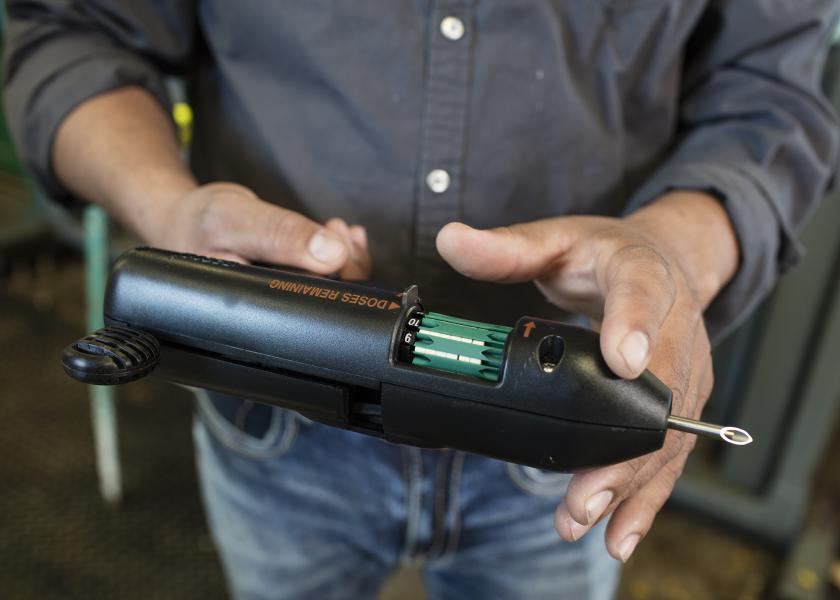Understanding the Latest Changes to Over-the-Counter Antibiotics and Beef Implants: Insights from Dan Thompson, DVM

Still unclear about the recent changes to over-the-counter antibiotics or beef promoting implants? In a recent AgriTalk, Dan Thompson, DVM, host of Doc Talk TV and owner and partner in Production Animal Consultation, shares details about how producers will operate going forward, following the new antibiotic and implant regulations.
OTC Livestock Antibiotics Changes
As Thompson explains, these changes are part of a continuous improvement in antibiotic regulations.
“We’ve gone from extra label drug use in the early 2000s to [Veterinary Feed Directive (VFD)] in 2017, and now, effective June 11, there’s no more over-the-counter antibiotics. So, if you go to the fleet and farm to buy some LA200, its not going to be there,” Thompson says.
It’s not going to be that big of deal, he adds, as producers will simply need to establish a veterinary client-patient relationship, if they haven’t already, to obtain a prescription for the antibiotics needed.
These specific changes have been enacted through the Food and Drug Administration (FDA) across all livestock breeds.
“We need to put a sign at all the Orschelns when people check out, saying this young person that's the cashier had nothing to do with the reason why you can't get a bottle of LA 200 on a Sunday afternoon treat that foot rot,” Thompson jokes.
Instead of hassling the cashier, Thompson encourages producers to talk to their veterinarian and obtain the prescription for common products used for pinkeye or foot rot. Producers can then choose to buy the products from the veterinarian or present the prescription to any local drug distributor, he explains.
Beef Implant Changes
Effective July 1, growth promoting hormone implants are under more specific reimplantation regulations.
Specifically, the beef cattle industry has been broken down into production stages, including beef calves (under two months of age and two months of age to weaning), growing cattle on pasture, growing cattle in a drylot, and growing cattle in a feedyard for slaughter.
While producers are still able to use implants across all stages, it’s the reimplantation regulations that producers need to consider.
Especially during the longer production phases, such as cattle on feed, Thompson advises producers read and follow label directions.
“You just need to make sure that implants that you’re using for reimplant are labeled: 1) the first implant is labeled to have a second implant administered after that one, and 2) find out which implants are available to follow initial implants,” Thompson advises.
When planning to reimplant, be sure to use products labeled for reimplantation, both initial and following, he adds.
Affecting the Bottom Line
With high cattle prices, Greg Henderson, editor of Drovers and guest host of AgriTalk, says ranchers have cattle worth 40% to 50% more than what they were last year—which increases the need and value of your veterinary-client relationship.
With yearly tight margins, Thompson adds that the veterinary client-patient relationship is valuable for many reasons.
“Number one, have a herd health plan. Number two, you’ve got to be able to have a parasite control program. We’re trying to maximize pounds, so I think that’s the bottom line,” Thompson explans.
Read More:
Beef Cattle Implant Changes: What You Need to Know
What Antibiotics Will No Longer be Available OTC?
OTC Livestock Antibiotics Will Require Prescription June 11







